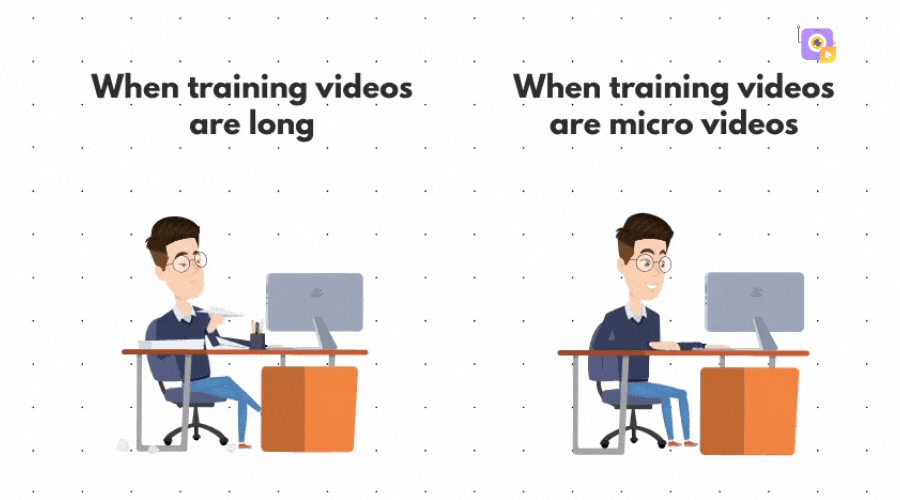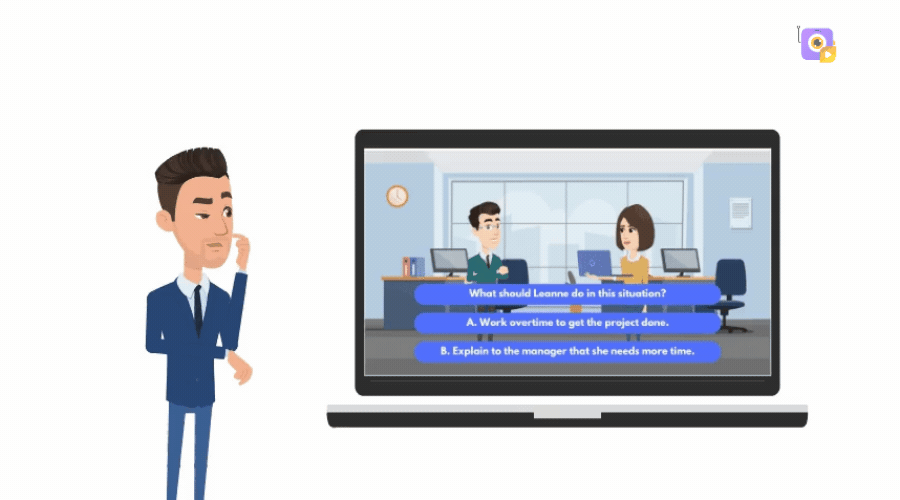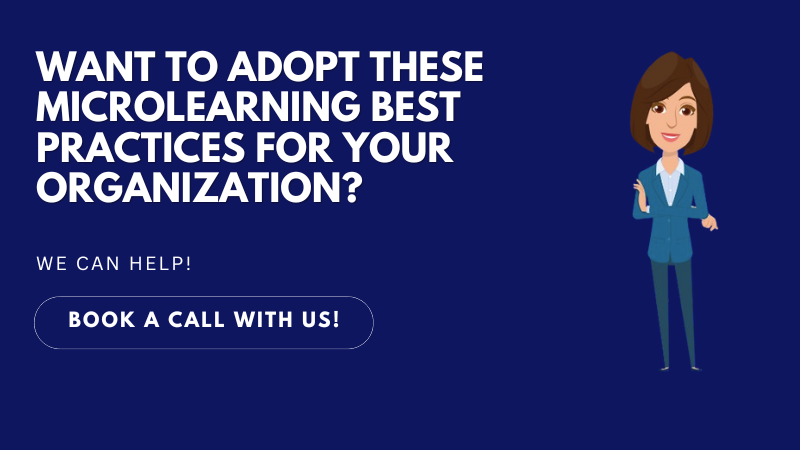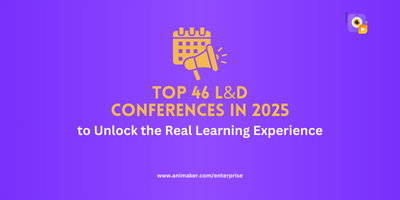Simplify Training with Actionable Microlearning Best Practices!
Imagine learning is like playing a video game. Would you rather face the final boss right away or level up bit by bit, mastering each skill as you go?That’s what microlearning offers - small, manageable challenges that help you gradually build toward the bigger picture through short, focused training formats.
But here’s where microlearning truly shines - it’s not just about breaking content into smaller pieces but also about easily fitting those bite-sized lessons into your day.
Even on a busy day, you can fit in learning during your break or time off because microlearning offers quick, bite-sized lessons that are easy to grasp without feeling overwhelmed.
In this article, we’ll explore the -
- Microlearning Best Practices
- Importance of microlearning in L&D
- Future Trends in Microlearning
- Challenges and Considerations
Let’s begin!
Microlearning Best Practices
To ensure your microlearning content is impactful and effective, it's essential to follow certain techniques. Here are microlearning best practices for developing successful microlearning content.
1. Focus on One Objective at a Time
In general, eLearning videos cover multiple modules in a single video, which can overwhelm learners. However, with microlearning, each module can be represented individually, targeting a single learning objective or key concept.

By narrowing the focus, learners can quickly grasp and retain the information without feeling overloaded.
2. Keep Content Short and Concise
Microlearning, as the name suggests, is short. Ideally, each lesson or module should only take between 5 to 7 minutes.

Keeping content concise helps maintain learners’ attention and enhances information retention. Avoid irrelevant details and focus on delivering the core message as quickly and clearly as possible.
3. Make it Mobile-Friendly & Accessible
Design microlearning content to be mobile-friendly, allowing learners to access it anytime, anywhere, on any device.

With an increasing number of people relying on smartphones for learning, it’s crucial to optimize content for smaller screens and ensure it loads quickly and displays properly on all devices.
It is also advised to add subtitles to your videos to help your global workforce learn the material effectively.
4. Use Real-World Examples and Scenarios
Personalize learning by incorporating real-world examples, scenarios, and case studies. Create interactive, scenario-based lessons that put learners in control of the decisions.

Let’s look at a quick microlearning example of scenario based learning. Click on the thumbnail below to view the course.
This quick team etiquette course is designed to train employees on the do’s and don’ts at a workplace.
Not only is this training bite-sized, but it also gives you a safe space to explore the other options and understand the consequences of certain choices.
This makes the content more relatable and demonstrates how to apply knowledge in practical situations. By highlighting the relevance of the material, you enhance learner engagement and improve information retention.
Moreover, the animations add a fun and interactive element, helping to simplify complex scenarios and make the learning experience more engaging and memorable.
And making such animated content is so much easier, thanks to AI-powered tools.
The course above is made with Animaker for animated content and then integrated with Articulate Storyline for interactivity.
In case you don’t know, Animaker is an AI-powered web-based tool that allows you to create high-quality animated training videos, which you can then use to create scenario-based microlearning.

Animaker’s impressive features include -
- Animated character library - 1000+ characters of different ages, sizes, and professions with 1000+ actions and 20 expressions and an in-built character builder to create a Billion+ character possibilities.
- Asset library - 150M+ assets, including 2D backgrounds, properties, icons, stock images, videos, and royalty-free music.
- In-built AI features -
- AI animation generator to generate animated videos, which you can edit later.
- AI asset generator to generate properties, bg, and images.
- AI subtitle generator to generate subtitles and translate the generated subtitles to 130+ languages
- AI voice-over generator to generate voices from 2000+ options in 200+ languages.
5. Track and Measure Progress
Use analytics to monitor learner engagement, completion rates, and performance.

Gathering data on how learners interact with microlearning content will give you valuable insights into what’s working and what needs improvement.
6. Provide Continuous Reinforcement
The training does not end when the initial set of microlearning modules is completed. Reinforce learning through follow-up activities, such as short quizzes, discussion forums, or practical tasks, ideally spaced out with intervals of time after completing each module.

This approach ensures that learners revisit key concepts after a gap, helping them solidify their understanding.
7. Gather Learner Feedback
Regularly seek feedback from learners on the content's effectiveness, engagement level, and ease of understanding.

Learner feedback is invaluable in identifying areas for improvement and ensuring that future microlearning modules are even more effective and aligned with learners' needs.
By following these microlearning best practices, organizations can create microlearning experiences that are engaging, relevant, and impactful, ultimately leading to better learning outcomes and more significant business results.
Check out some of the best microlearning examples that you can incorporate into your microlearning best practices by clicking on the link provided.
Importance of microlearning in L&D
It is now a known fact that microlearning has emerged as a powerful tool in the Learning and Development (L&D) landscape. Here are a few key reasons why microlearning is vital in today's L&D strategies.
- Captures Limited Attention: With attention spans shrinking due to prolonged internet and smartphone use, microlearning’s concise format offers a practical solution with its small and manageable segments.
- Increases Engagement and retention: Microlearning's bite-sized lessons engage learners through interactive elements like animations and quizzes. This approach boosts participation and enhances retention by presenting concepts in easy-to-digest portions.
- Provides Flexibility and Accessibility: Microlearning allows learners to access content anytime, anywhere, on any device. This on-demand, mobile-friendly approach is perfect for busy professionals who must fit learning into their hectic schedules.
- Supports Immediate Learning: In fast-paced work environments, microlearning offers immediate guidance and access to relevant information, enabling employees to solve problems quickly and boost productivity.
- Aligns with Business Goals: Creating microlearning videos is cost-effective and time-efficient, allowing employees to complete training quickly and return to their tasks with minimal workflow disruption.
These are a few important reasons that highlight the critical role microlearning plays in modern L&D.
But what does the future look like in microlearning?
Future Trends in Microlearning
The future of microlearning is full of exciting possibilities, with several key trends shaping its trajectory in the Learning and Development (L&D) space.
- We can expect to see AI playing a larger role in personalizing learning and tailoring content to meet individual needs and preferences.
- Gamification in training will also continue to gain attraction, making learning more interactive and engaging.
- Mobile learning will become even more prevalent as it adapts to the flexible work habits of today’s employees, allowing them to learn on the go.
- Furthermore, there will be a strong focus on just-in-time learning, providing employees with quick, targeted training that fits seamlessly into their busy schedules.
These innovations are set to redefine how we approach microlearning in the years to come.
Challenges and Considerations
Despite its promising future, microlearning does come with challenges.
- One of the main hurdles is the continuous need to create high-quality and relevant content that can sustain engagement over time.
- Additionally, there’s the requirement to update material frequently to keep it fresh and aligned with current trends.
- Finally, it’s important to recognize that microlearning, while effective for quick lessons, may not always be suitable for complex topics that require deep understanding and extensive study.
Overcoming these challenges is crucial to using microlearning in corporate training to its maximum potential.
***
Incorporating microlearning best practices can transform how your team learns—making training faster, more engaging, and incredibly effective.
By breaking down complex topics into bite-sized, interactive sessions, you not only boost retention but also create a learning experience that fits seamlessly into anyone’s busy schedule.
Why settle for traditional, drawn-out training when you can deliver knowledge in sharp, memorable bursts?
It’s time to level up your training strategy, maximize learner engagement, and drive real results. Ready to make microlearning the game-changer in your L&D toolkit? Click on the banner below to talk with our Animaker experts!







